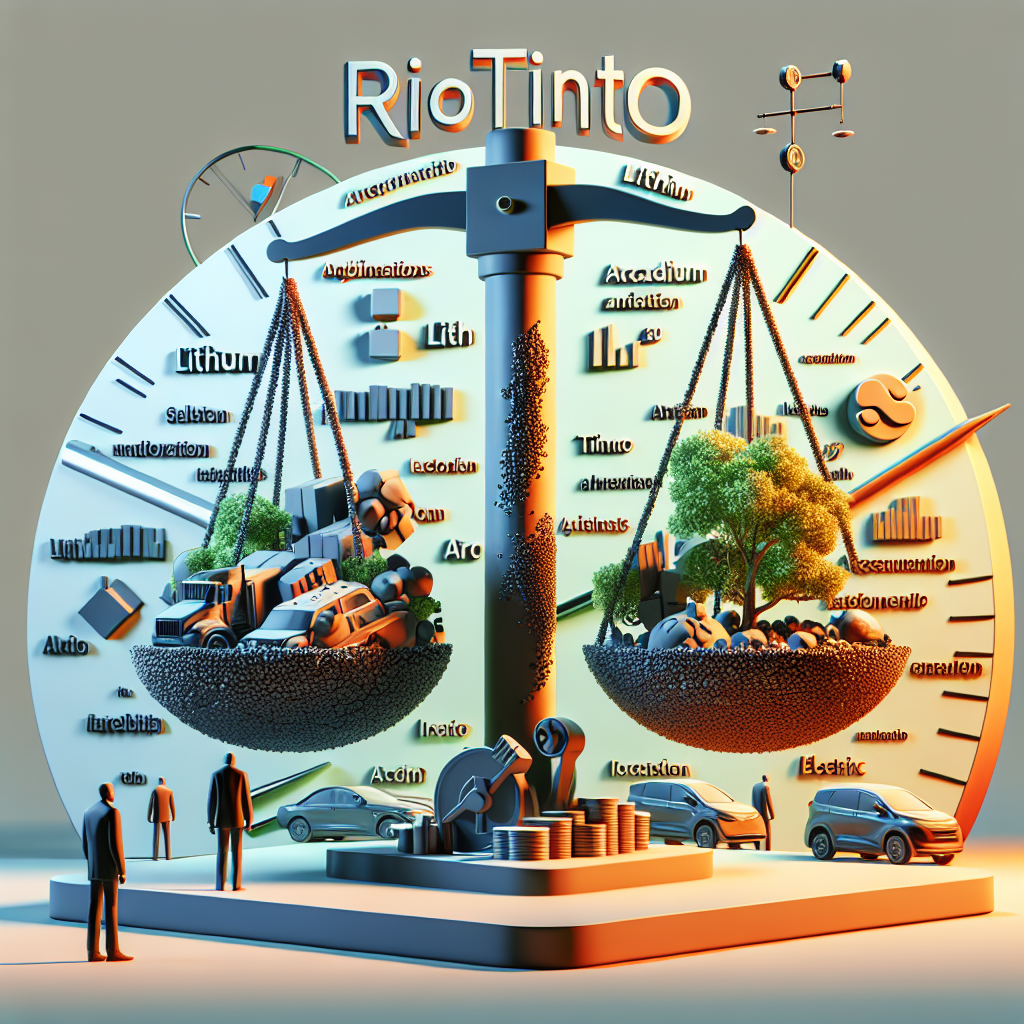Rio Tinto’s Strategic Move into Lithium with Arcadium Acquisition Talks
Shifting Landscape in Mining
In a bold step aimed at securing its position in the rapidly expanding electric vehicle (EV) market, Rio Tinto is reportedly in discussions to acquire Arcadium Lithium, a company formed through the merger of Philadelphia-based Livent and Australia’s Allkem. This acquisition could significantly reshape Rio Tinto’s portfolio, which has historically been dominated by iron ore, the primary ingredient in steel, for generating major profits.
With electric vehicles leading the charge toward a greener future, the demand for lithium—a critical component in EV batteries—has soared. According to projections from the International Energy Agency, lithium demand could increase up to eightfold by 2040 if global efforts to meet the goals of the Paris climate agreement remain on track. Currently, lithium is recognized as a critical mineral in the U.S., emphasizing the urgency for developing robust supply chains in the industry.
Challenges in Lithium Expansion
However, Rio Tinto’s journey into the lithium sector has been fraught with complications. The company faced significant hurdles with its proposed lithium mining project in Serbia, which encountered community resistance and issues with misinformation campaigns. As Chief Executive Jakob Stausholm revealed previously, Rio Tinto is keen to pursue lithium acquisitions but remains cautious about overpaying in an increasingly competitive landscape.
Arcadium Lithium, boasting a market capitalization of approximately $3 billion, possesses mining operations in both Argentina and Australia, coupled with processing facilities located across the globe, including the U.S., China, Japan, and the U.K. A successful acquisition of Arcadium would position Rio Tinto among the top lithium producers worldwide, a notable feat given the market’s rapid evolution from a niche to a critical segment within the commodities space.
Market Dynamics and Price Fluctuations
It’s essential to contextualize this potential acquisition within the broader market dynamics currently at play. Recently, prices for lithium—after reaching record highs during a two-year boom—have fallen sharply due to a slew of new investments aimed at ramping up production to meet rising demand. As the supply chain matures and more mining and processing operations come online, pricing seems to have adjusted downward, bringing some uncertainty to potential new investments.
Despite these challenges, several mining companies, including Rio Tinto, are expressing renewed enthusiasm for mergers and acquisitions (M&A). This uptick in corporate deal-making can largely be attributed to incentivizing policies like the Inflation Reduction Act in the U.S., which have spurred interest in investing in industrial metals, copper, and other minerals deemed essential for the energy transition.
Rio Tinto’s Recent Acquisitions
Earlier this year, Rio Tinto announced it had acquired a lithium project named Rincon in Argentina for $825 million. Nevertheless, complications related to inflation and design modifications have resulted in the project’s initial cost estimates being more than twice what was originally anticipated. Rio Tinto is currently assessing options for a full-scale operation at Rincon, despite ongoing challenges associated with its Serbian Jadar project.
The Jadar project promises to be substantial for Rio Tinto’s lithium portfolio, although it has faced continued regulatory hurdles and public opposition in Serbia. The Serbian government initially revoked project licenses following protests but has since indicated support through a strategic partnership on critical minerals with the European Union. However, final approvals remain pending.
A Future Focused on Sustainable Resources
In summary, Rio Tinto’s potential acquisition of Arcadium Lithium signals the mining giant’s commitment to pivoting toward lithium and other critical minerals as part of its strategy for future growth. The transition to clean energy is creating a crucial demand for lithium, indicative of the changing landscape within the commodities sector.
For serious investors interested in resource-driven stocks, this situation underscores the dual-edged sword of opportunity and risk. As the world increasingly transitions towards cleaner energy solutions, mining firms that effectively navigate regulatory landscapes, manage costs, and anticipate market shifts could emerge as dominant players in the new energy paradigm. However, the challenges associated with lithium extraction and production cannot be overlooked, particularly as prices stabilize and demand begins to adjust to the realities of supply chain logistics and regulatory frameworks.
Investors would do well to closely monitor developments surrounding this acquisition and the broader implications for the lithium market—a sector poised for substantial growth yet riddled with complexities.
